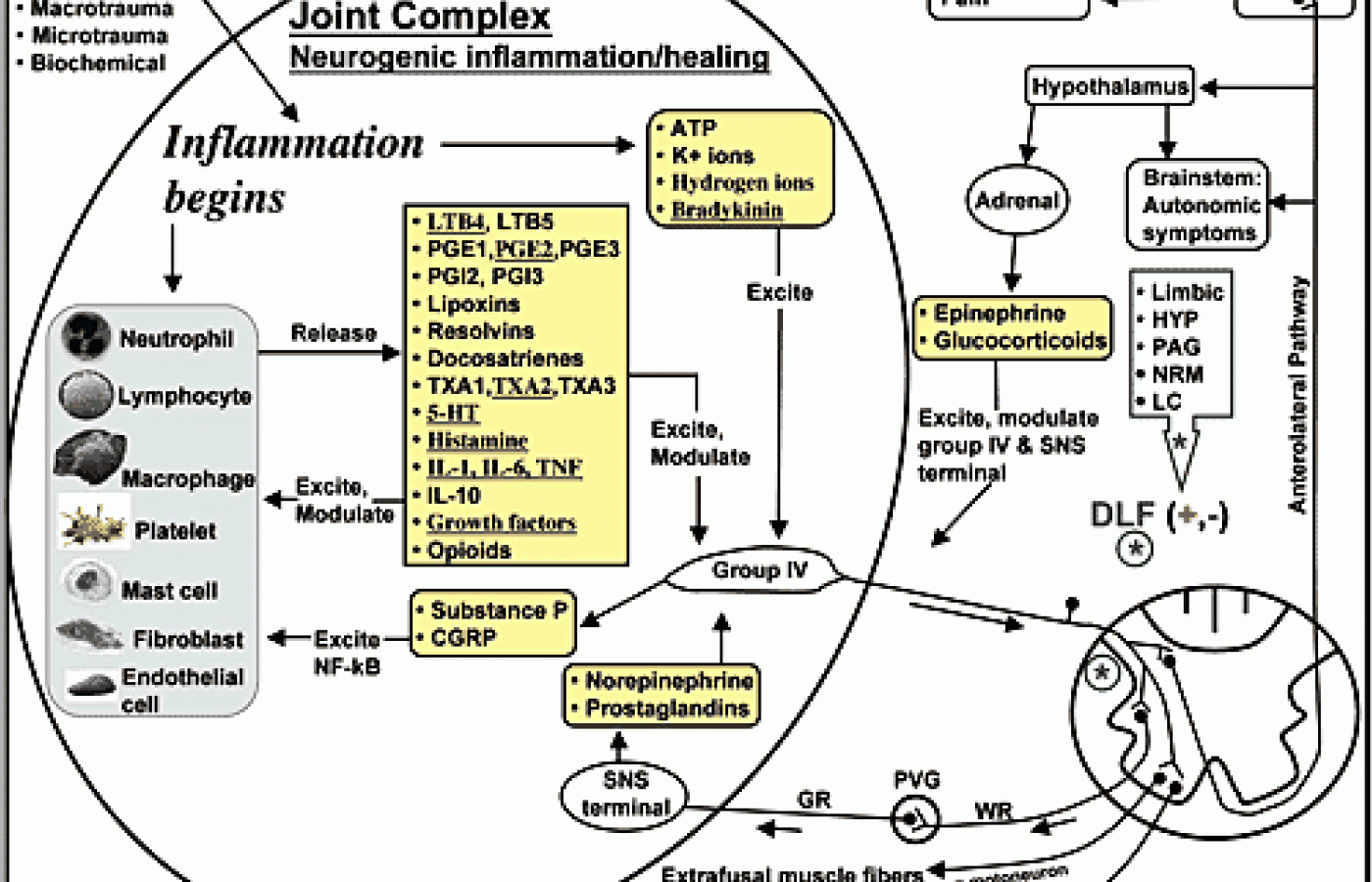New York's highest court of appeals has held that no-fault insurers cannot deny no-fault benefits where they unilaterally determine that a provider has committed misconduct based upon alleged fraudulent conduct. The Court held that this authority belongs solely to state regulators, specifically New York's Board of Regents, which oversees professional licensing and discipline. This follows a similar recent ruling in Florida reported in this publication.
Nociception Is Not a Symptom; Nociception Is Not Pain
The subject of neuroscience is difficult for chiropractic and medical students, and this seems likely because our professional education does not devote enough time to this important subject. Consequently, we graduate with the knowledge that there is a nervous system, but its function remains mysterious to us.
I urge our students at Palmer Chiropractic College Florida (PCCF) to attend Grand Rounds educational sessions at the local hospital. Recently, a handful of students attended a "pain update" Grand Rounds session. Part of the presentation reviewed the so-called pain pathways; the presenter reminded the docs about the spinothalamic tract, as well as the associated primary afferents and thalamocortical projections. Our students realized that non-neurologist MDs and medical students struggle with neuroscience as much as chiropractors. Our students also realized that being experts in pain mechanisms will help them to communicate better with medical doctors and attorneys when they begin practice.
One of the biggest errors made by MDs and DCs is equating nociception with pain. This perception is absolutely false and needs to be eradicated from our minds. The reason we harbor this misconception is that physiology texts and basic neuroscience texts do not emphasize the difference between nociception and pain adequately.
Nociception is the reception of a noxious stimulus, while pain is one potential outcome of nociception. Nociception occurs in the receptor portion of the group IV afferents; nociceptive action potentials are conveyed to the spinal cord via group IV afferent axons. Nociception is relayed to the brainstem, hypothalamus and thalamus via tract cells/neurons. In the case of pain, nociception is relayed to the thalamus via neospinothalamic and paleospinothalmic tract cells or neurons. From the thalamus, certain thalamocortical fibers project to the limbic system, where the emotion of hurt or pain is generated.
Spinal pain patterns were outlined for us back in the 1950s. Dr. Bernard Feinstein and colleagues injected lateral interspinous process tissues with hypertonic saline and mapped out local and referred pain patterns.1 Many popular texts have utilized these pain patterns2,3 when describing the common clinical presentations that present to the chiropractic office. The pain patterns help us to determine potential pain generators; that is, the tissues that are likely responsible for generating the painful symptoms.
Figure 1 illustrates the neurogenic inflammation process, which is thought to be involved in the generation of pain and various diseases.4 Notice that group IV afferents synapse with neurons in the dorsal horn, which then decussate and travel to higher CNS centers via the anterolateral pathway. While numerous neurons travel in this pathway, figure 1 illustrates a single fiber for the sake of reducing the complexity of the image.
Notice the neurons reaching the thalamus; they are called spinothalamic tract cells/neurons. Their activation can lead to the experience of pain. This is the pathway that was activated when lateral interspinous injections with hypertonic saline led to the experience of pain in Feinstein's subjects.
Of great interest, and currently lost to antiquity, as most have never read the 1954 Feinstein, et al., article, is the fact that certain of the injected subjects did not experience pain. This needs to be emphasized: Certain subjects who were injected with hypertonic saline complained little of pain, and instead, as Feinstein, et al., state, "were overwhelmed by a distressing complex of symptoms."

These patients suffered with pallor, sweating, bradycardia, a drop in blood pressure, subjective "faintness," nausea and syncope. Feinstein, et al., referred to these symptoms as "autonomic concomitants." They explained that these visceral manifestations "were not proportional to the severity of or to the extent of pain radiation; on the contrary, they seemed to dominate the experience of subjects who complained of little pain." Feinstein, et al., also stated that "this is an example of the ability of deep noxious stimulation to activate generalized autonomic responses independently of the relay of pain to conscious levels."
Figure 1 illustrates second-order neurons in the anterolateral system that go to the hypothalamus and brainstem (i.e., spinohypothalamic and spinoreticular cells/neurons). Nociceptive input reaching this lower CNS center is thought to generate visceral symptoms.5-7
In short, we need to appreciate that we are not all wired in the same neurological pattern. For some reason, noxious stimulation of spinal tissues will lead to pain in most individuals; however, in a certain population of patients, visceral symptoms will predominate. No one knows why this happens or to the extent patients suffer with visceral symptoms due to spinal nociception.
One thing is for sure: It is an extraordinary mistake to equate nociception with pain. Nociception is not pain. Nociception is the reception of a noxious stimulus, and this can lead to the experience of local pain, referred pain, or visceral symptoms. Only a few papers emphasize this distinction between nociception and pain, and further discuss the subject in detail.6,7
References
- Feinstein B, J Langton, R Jameson, F Schiller. Experiments on pain referred from deep somatic tissues. J Bone Joint Surg 1954;36-A(5):981-97.
- Foreman SM, AC Croft. Whiplash Injuries: the Cervical Acceleration Deceleration Syndrome. Baltimore: Williams & Wilkins, 1988.



